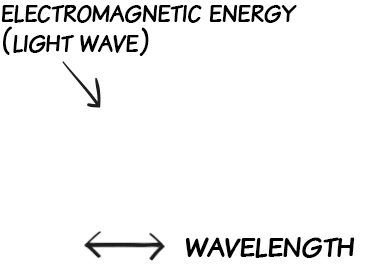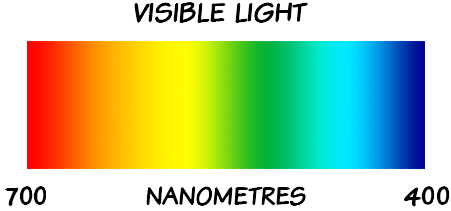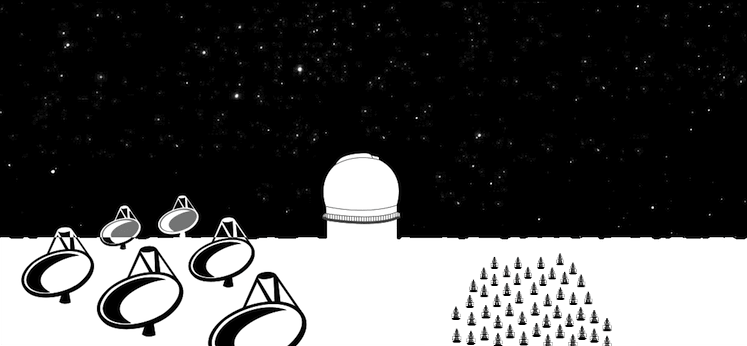Almost everything we do, every single day, uses electromagnetic energy.
The most familiar form of electromagnetic energy is the light we see, called visible or optical light.
But did you know that X-rays, microwaves and even radio waves are actually all the same thing as visible light? They’re all electromagnetic energy, just at different wavelengths.
electromagnetic energy travels in waves that have a length (sort of like a size).
the wavelength is the distance between two peaks of the wave.


all the different colours of visible light are just different wavelengths.
 For example, red has a wavelength of about 700 nanometres, (that's 700 billionths of a metre, about the same size as a bacteria).
For example, red has a wavelength of about 700 nanometres, (that's 700 billionths of a metre, about the same size as a bacteria).
All the other types of electromagnetic energy can be arranged on either side of visible light in a spectrum. 
We call it the
electromagnetic spectrum!
when we look up at the night sky, we're seeing visible light from distant stars, planets and the moon.
but things out in space are also producing other kinds of electromagnetic energy, like radio waves.

Astronomers use specialized telescopes to collect waves from across the electromagnetic spectrum to get the full picture of what's happening out in space.





